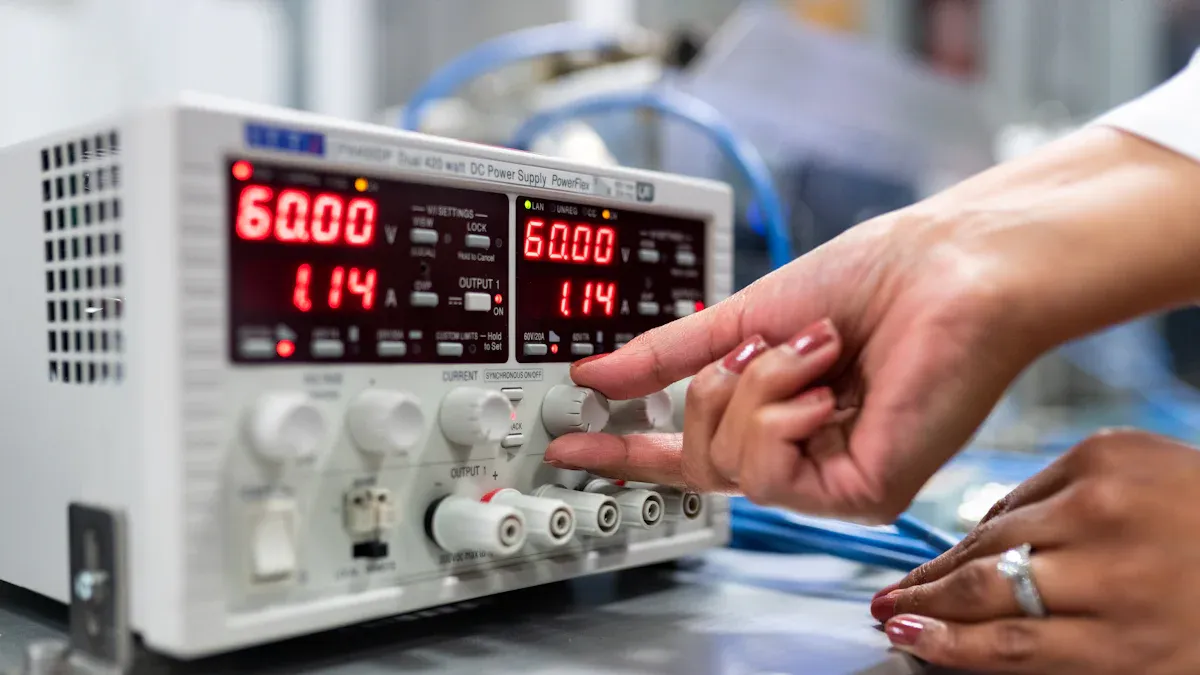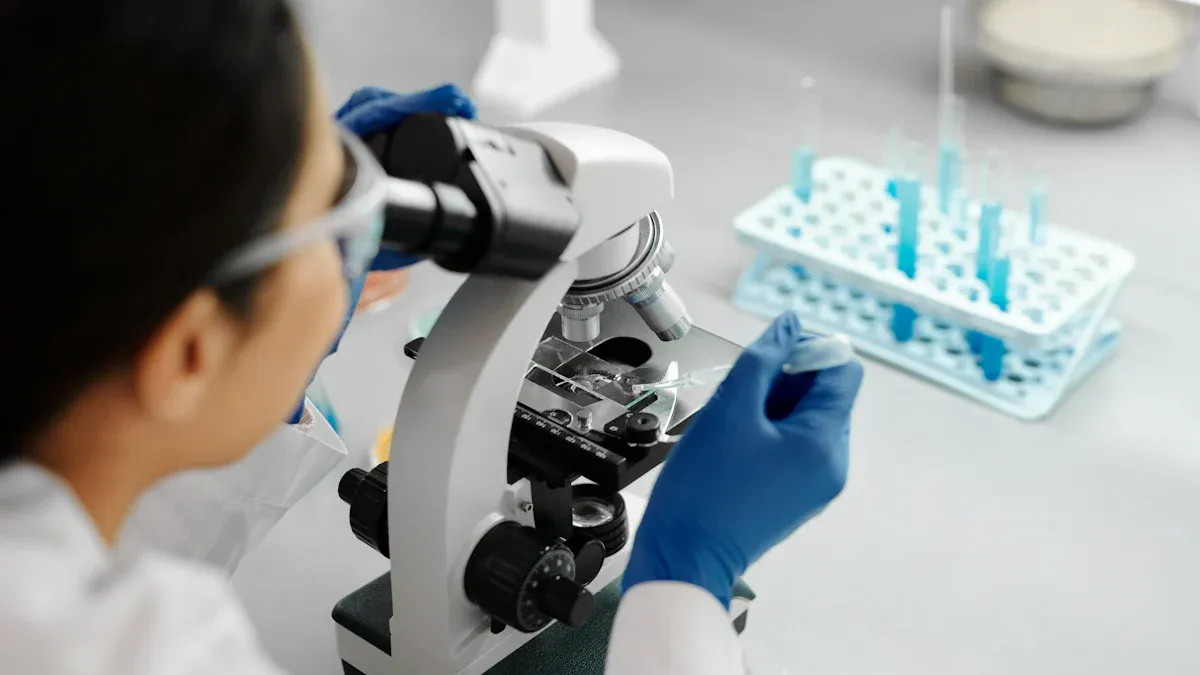How Nitinol tubing reduces fatigue risk in medical devices

Nitinol tubing with low fatigue risk plays a vital role in modern medical devices. Its unique composition allows it to endure extreme fatigue loading conditions, such as millions of cycles of arterial pressure in applications like stents and heart valves. High purity nitinol enhances durability, ensuring reliable performance in long-life fatigue scenarios. Regulatory standards, including ASTM F3211-17, validate its ability to withstand deformation and return to its original shape, offering unmatched fatigue resistance. Medical device manufacturers prioritize nitinol for its superior pseudoelasticity, making it indispensable for tools requiring both flexibility and durability.
Key Takeaways
Nitinol tubing is very strong and resists breaking, which makes it great for medical tools like stents and guidewires that face repeated use.
It can "remember" its shape and return to it after being bent, helping it work well in small surgeries.
Nitinol can bend a lot without breaking, making it flexible and useful in busy medical settings.
It is safe for the body and does not rust, which makes it good for long-term implants and lowers the chance of bad reactions.
Compared to materials like stainless steel, nitinol tubing is more flexible and lasts longer, so it is often chosen for important medical uses.
Unique properties of Nitinol SMA tubes
Nitinol SMA tubes possess a unique combination of properties that make them indispensable in medical applications. These properties include the shape memory effect, superelasticity, and biocompatibility, each of which plays a critical role in enhancing the performance and reliability of medical devices.
Shape memory effect and its role in medical applications
The shape memory effect is one of the most remarkable properties of nitinol SMA tubes. This phenomenon allows the material to return to its original shape when heated above a specific temperature. For example, nitinol stents can be compressed for insertion into a blood vessel and then expand to their intended shape once deployed. This adaptability ensures minimal invasiveness and precise functionality in medical applications.
Did you know? The shape memory effect in nitinol is a result of its unique crystalline structure, which undergoes a reversible phase transformation between martensite and austenite phases.
Experimental results validate the reliability of this property. Nitinol's ability to regain its shape after deformation has been extensively tested, demonstrating its suitability for critical applications like self-expanding stents. These stents restore blood flow with minimal surgical intervention, showcasing the material's adaptability and reliability.
Property/Effect | Description |
|---|---|
Shape Memory Effect | Nitinol can return to its original shape when heated, demonstrating adaptability and reliability. |
Applications in Medicine | Used in self-expanding stents that restore blood flow with minimal invasiveness. |
Performance Characteristics | Lightweight, strong, and flexible, making it superior to other materials for high-tech applications. |
Superelasticity for enhanced flexibility and performance
Superelasticity is another defining feature of nitinol SMA tubes. This property enables the material to undergo large deformations without permanent damage, returning to its original shape upon stress removal. In medical applications, this translates to enhanced flexibility and performance, particularly in dynamic environments.
For instance, nitinol guidewires used in minimally invasive procedures rely on superelasticity to navigate complex anatomical pathways without kinking or breaking. This property ensures that the devices maintain their structural integrity even under repeated stress cycles.
Property | Description |
|---|---|
Superelasticity | Enables large deformations without permanent damage, returning to original shape upon stress removal. |
Superelasticity also contributes to the high strength-to-weight ratio of nitinol SMA tubes, making them ideal for applications requiring both durability and lightweight construction.
Biocompatibility and its significance in medical devices
Biocompatibility is a critical factor in the success of any medical device. Nitinol SMA tubes exhibit excellent biocompatibility, making them highly suitable for use in medical applications. Their compatibility with living tissues reduces the risk of adverse reactions, ensuring patient safety.
Additionally, nitinol's corrosion resistance enhances its biocompatibility. The material resists degradation in the body's harsh environment, maintaining its mechanical properties over time. This makes it a preferred choice for long-term implants like stents and heart valves.
Tip: The combination of biocompatibility and corrosion resistance in nitinol SMA tubes ensures their reliability in demanding medical environments.
Property | Description |
|---|---|
Biocompatibility | High compatibility with living tissues, making it suitable for medical applications. |
Corrosion Resistance | Resists degradation in the body's harsh environment, ensuring long-term reliability. |
The unique properties of nitinol SMA tubes—shape memory effect, superelasticity, and biocompatibility—set them apart from other materials. These characteristics not only enhance the performance of medical devices but also ensure their safety and longevity in critical applications.
Fatigue resistance and mechanical advantages of Nitinol tubing

How Nitinol tubing withstands cyclic loading
Nitinol tubing demonstrates exceptional fatigue resistance, making it ideal for medical applications that involve repeated cyclic loading. Its ability to endure millions of stress cycles without failure stems from its unique mechanical properties and precise manufacturing processes. Fatigue testing on Nitinol samples reveals that the material can survive up to 10⁷ cycles under strain amplitudes ranging from 0.5% to 2.9%. This remarkable performance ensures reliability in high-stress environments, such as those encountered by stents and heart valves.
Note: Environmental factors, such as non-metallic inclusions, can influence the fatigue performance of Nitinol tubing. Smaller inclusions and precise processing techniques enhance its fatigue resistance by reducing stress concentration points.
Tubing Lot | Fatigue Life (Cycles) | Observations |
|---|---|---|
1−1 | 10⁷ | Sparsity of fractures in high-cycle regions |
1−2 | 10⁷ | Sparsity of fractures in high-cycle regions |
2−1 | 10⁷ | Sparsity of fractures in high-cycle regions |
Cyclic fatigue tests conducted at physiological temperatures further highlight Nitinol's durability. These tests reveal a nonlinear relationship between strain amplitude and mean strain, which is critical for predicting fatigue life in medical scenarios. Additionally, Nitinol tubing subjected to strain-controlled fatigue testing shows that samples with 20–30% cold work achieve the highest mean cycles to failure. This data underscores the importance of Nitinol's fatigue resistance in ensuring the longevity of medical devices.
High strength-to-weight ratio for medical applications
Nitinol tubing offers an impressive strength-to-weight ratio, which is essential for medical devices requiring both durability and lightweight construction. With a tensile strength of approximately 500 MPa at room temperature, Nitinol matches the strength of materials like stainless steel and titanium alloys while maintaining a lower weight. This combination of strength and flexibility allows Nitinol to perform reliably in high-stress environments.
Nitinol's phase transformation properties further enhance its performance, enabling it to withstand significant mechanical stress without permanent deformation.
Its lightweight nature reduces the overall mass of medical devices, improving patient comfort and ease of use.
These characteristics make Nitinol tubing a preferred choice for applications such as stents, guidewires, and surgical instruments, where both strength and flexibility are critical.
Flexibility and adaptability in dynamic environments
Nitinol tubing excels in dynamic clinical environments due to its unique flexibility and adaptability. Its superelasticity and shape memory properties allow it to navigate complex anatomical pathways and adjust to varying vessel sizes. Experimental tests confirm that Nitinol can endure significant strain without permanent deformation, making it indispensable in minimally invasive procedures.
For example, Nitinol guidewires used in cardiovascular interventions rely on their flexibility to traverse intricate vascular networks. Similarly, stents made from Nitinol adapt to the natural movements of blood vessels, maintaining their structural integrity under constant stress. This adaptability ensures that medical devices made from Nitinol perform reliably in challenging conditions.
Tip: The combination of fatigue resistance, strength, and flexibility in Nitinol tubing ensures its effectiveness in dynamic medical applications, enhancing both device performance and patient outcomes.
Critical medical applications of Nitinol tubing

Stents and their reliance on fatigue resistance
Stents represent one of the most critical applications of nitinol tubing in the medical field. These devices are designed to restore blood flow by keeping arteries open, often under constant cyclic loading due to arterial pressure. Nitinol's exceptional fatigue resistance ensures that stents can endure millions of stress cycles without failure. This durability is vital for maintaining long-term functionality in dynamic environments like the cardiovascular system. Additionally, nitinol's superelasticity allows stents to adapt to the natural movements of blood vessels, reducing the risk of complications such as restenosis.
Note: The combination of fatigue resistance and flexibility makes nitinol tubing indispensable for stent applications, ensuring both reliability and patient safety.
Catheters and guidewires for minimally invasive procedures
Catheters and guidewires rely heavily on the unique properties of nitinol tubing. These devices navigate complex anatomical pathways during minimally invasive procedures, such as angioplasty or endoscopy. Nitinol's superelasticity enables guidewires to bend and flex without kinking, ensuring precise navigation through intricate vascular networks. Its biocompatibility further enhances its suitability for these applications, minimizing the risk of adverse reactions.
The adaptability of nitinol tubing also allows catheters to maintain their structural integrity while accommodating the body's natural movements. This ensures that medical professionals can perform procedures with greater accuracy and reduced risk of device failure.
Surgical tools requiring precision and durability
Surgical tools demand high precision and durability, making nitinol tubing an ideal material for their construction. The material's fatigue resistance and strength-to-weight ratio allow these tools to perform reliably under repeated use. For instance, nitinol-based instruments maintain their sharpness and structural integrity even after prolonged exposure to mechanical stress.
The manufacturing process of nitinol tubing ensures tight tolerances, which is critical for surgical applications. The following table highlights the precision metrics achieved during production:
Tube Processing Method | Fatigue Life Insights |
|---|---|
TM-1 | Correlated with microstructural aspects and fatigue behaviors. |
TM-2 | Compared against TM-1 to assess fatigue life improvements. |
Outer Diameter (OD) (mm) | OD Tolerance (mm) | ID Tolerance (mm) |
|---|---|---|
OD≤0.3 | ±0.005 | ±0.010 |
0.3≤OD≤0.5 | ±0.007 | ±0.015 |
0.5≤OD≤1.5 | ±0.015 | ±0.020 |
1.5≤OD≤2.5 | ±0.020 | ±0.030 |
2.5≤OD≤3.5 | ±0.020 | ±0.040 |

These metrics highlight nitinol's ability to meet the stringent requirements of surgical tools, ensuring precision and reliability in critical medical applications.
Why Nitinol tubing outperforms other materials in fatigue resistance
Comparison with stainless steel and cobalt-chromium alloys
Nitinol tubing surpasses traditional materials like stainless steel and cobalt-chromium alloys in fatigue resistance and adaptability. Stainless steel, while strong, lacks the flexibility required for dynamic medical applications. It often fails under repeated stress cycles, making it less reliable for devices like stents and guidewires. Similarly, cobalt-chromium alloys offer high strength but fall short in terms of elasticity and long-term durability.
Nitinol's unique properties, such as superelasticity and shape memory, give it a distinct advantage. These characteristics allow nitinol to endure significant strain without permanent deformation, a feature unmatched by its counterparts. For example, nitinol tubing can withstand millions of stress cycles, maintaining its structural integrity in demanding environments. This makes it the material of choice for critical applications where both flexibility and fatigue resistance are essential.
Tip: AccuPath specializes in manufacturing high-quality nitinol tubing, ensuring superior performance compared to traditional materials.
Material | Fatigue Resistance | Flexibility | Long-Term Durability |
|---|---|---|---|
Nitinol | High | Excellent | Outstanding |
Stainless Steel | Moderate | Low | Moderate |
Cobalt-Chromium Alloy | Moderate | Low | High |
Long-term performance in demanding medical environments
Nitinol tubing excels in long-term performance, particularly in challenging medical environments. Its tensile strength, ranging from 500 MPa to 900 MPa, ensures it can handle significant stress without failure. Process-optimized nitinol tubes achieve local strains of up to 6%, showcasing their exceptional flexibility and durability. These attributes are critical for applications like stents and catheters, which must endure constant movement and pressure within the body.
Sputtered nitinol further enhances performance by achieving local strains exceeding 4%, making it ideal for high-stress applications. Unlike other materials, nitinol resists fatigue and maintains its mechanical properties over time. This reliability ensures that medical devices perform consistently, reducing the risk of failure and improving patient outcomes.
AccuPath leverages advanced manufacturing techniques to produce nitinol tubing with unparalleled precision and quality. Their expertise ensures that the tubing meets the stringent demands of modern medical applications and advantages, making them a trusted partner for healthcare innovations.
Note: The superior fatigue resistance and adaptability of nitinol tubing make it indispensable for long-term medical applications, ensuring both safety and reliability.
Nitinol tubing combines fatigue resistance, shape memory, and biocompatibility, making it a cornerstone in modern medical device design. Its ability to endure millions of stress cycles ensures reliability and safety in critical applications. Research highlights that structures with round, fully embedded particles in NiTi materials experience less fatigue strain compared to those with broken particles or elongated voids. Future designs should prioritize these characteristics to enhance performance and longevity.
Global strain amplitude and mean strain influence fatigue resistance.
Ellipticity and orientation impact structural durability.
As medical technology advances, Nitinol tubing will remain essential for reducing fatigue risk and improving patient outcomes.
FAQ
1. What makes Nitinol tubing unique compared to other materials?
Nitinol tubing combines shape memory, superelasticity, and biocompatibility. These properties allow it to endure millions of stress cycles, adapt to dynamic environments, and integrate safely into the human body. Its performance surpasses traditional materials like stainless steel and cobalt-chromium alloys.
2. How does Nitinol tubing improve the durability of medical devices?
Nitinol tubing resists fatigue and deformation under cyclic loading. Its high strength-to-weight ratio and flexibility ensure long-term reliability in demanding applications like stents, guidewires, and surgical tools. These features reduce device failure risks.
3. Is Nitinol tubing safe for use in implants?
Yes, Nitinol tubing exhibits excellent biocompatibility and corrosion resistance. These qualities minimize adverse reactions and ensure safety in long-term implants like stents and heart valves. Its compatibility with living tissues makes it ideal for medical applications.
4. Why is superelasticity important in medical devices?
Superelasticity allows Nitinol tubing to undergo large deformations without permanent damage. This property ensures flexibility and adaptability in dynamic environments, making it essential for devices like guidewires and catheters used in minimally invasive procedures.
5. How does Nitinol tubing contribute to minimally invasive procedures?
Nitinol tubing's flexibility and adaptability enable precise navigation through complex anatomical pathways. Its fatigue resistance ensures reliability during repeated use, while its biocompatibility reduces risks. These features make it indispensable for tools like catheters and guidewires.
See Also
Nitinol Tubing's Impact on the Future of Healthcare
Nitinol Tubing Uses in Modern Medical Equipment
Nitinol Tubing's Contribution to Medical Technology Progress

